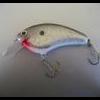
BobP replied to Carrot_Stix's topic in Fishing Rods, Reels, Line, and Knots

BobP replied to lynyrdsky1's topic in Fishing Rods, Reels, Line, and Knots

BobP replied to ksbasser's topic in Fishing Rods, Reels, Line, and Knots

BobP replied to Brian4618's topic in Fishing Rods, Reels, Line, and Knots

BobP replied to airborne_angler's topic in Fishing Rods, Reels, Line, and Knots

BobP replied to kllrbee's topic in Fishing Rods, Reels, Line, and Knots

BobP replied to Dan-K's topic in Fishing Rods, Reels, Line, and Knots

BobP replied to kllrbee's topic in Fishing Rods, Reels, Line, and Knots

BobP replied to bnwcrankin's topic in Tacklemaking

BobP replied to BossHoss's topic in Fishing Rods, Reels, Line, and Knots

BobP replied to helms83's topic in General Bass Fishing Forum

BobP replied to trevor's topic in Fishing Rods, Reels, Line, and Knots

BobP replied to reeetep's topic in Fishing Rods, Reels, Line, and Knots
We have placed cookies on your device to help make this website better. You can adjust your cookie settings, otherwise we'll assume you're okay to continue.

